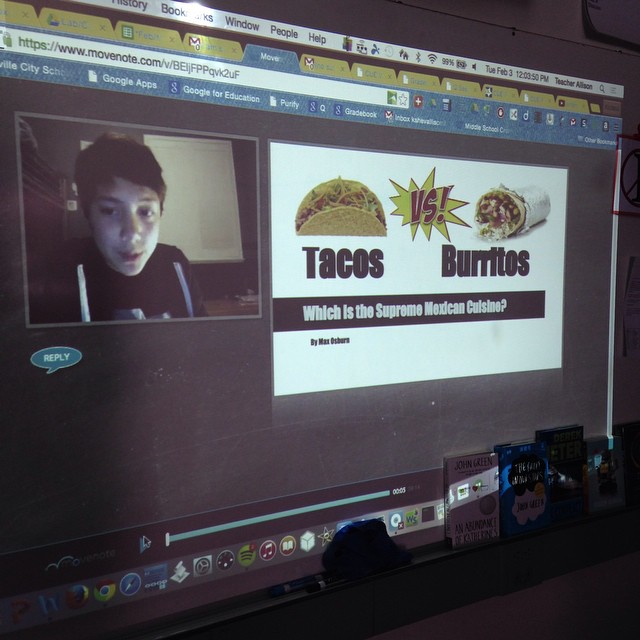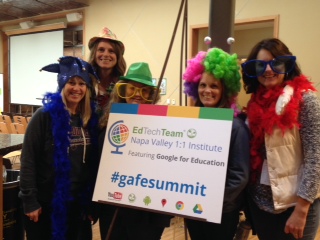If you’ve ever been to a punk rock show, you know the front is reserved for the few passionate individuals who are so into the music they feel the need to share it with others: hard and with full force, slamming into you, pummeling you into the next person. Sometimes it leaves you with bruises, but mostly it’s the craziest thing you’ll ever experience. You leave the show giggling, exhausted and yearning for more. This is how I feel about CUE Rockstar Teacher Camps (minus the bruises). I walked away from Petaluma this weekend so inspired, so enthusiastic, and counting the days until the next one: (141 days until CUE Rockstar Tahoe).
Why every educator should go to a CUE Rockstar Teacher Camp:
1. Start Time: The morning starts at 9:30. That alone should make you happy, not to be up at the crack of dawn on your days off. This also allows for a few “late night” sessions the night before. For some reason Rockstars are always held in close proximity to places to get delicious libations. Crazy.
2. The Format: There are only two sessions a day and normally the same sessions are taught in the morning and afternoon. This eases FOMO (fear of missing out), although I still suffered this weekend. I need Hermione Granger’s Time Turner. The sessions are also two hours long which allows you time to learn, play and actually figure out how to implement when you return to real life.
3. Lunch: Although the food is usually amazing, this is not the reason to give up your free time, beg for the money, (or shell out the fee yourself), and attend. Lunch is two hours, which seems long, but it is a magical experience. There is usually a session on something relevant in the cafeteria as you’re eating, (like using Twitter to grow as an educator and tell your story), but mostly you talk. A lot. To other educators. I learn so much just being in the room with fellow teachers and administrators who are fervent about student learning. So often we forget how powerful that can be.
4. The Faculty: Although they will claim they are no experts, don’t let them fool you. They are incredible educators and presenters. Their passion for teaching students, as well as sharing their knowledge with others makes them the most inspiring individuals you’ll meet. They are all volunteers that give up their time and WANT to be there. They believe in sharing tools and innovation to create student achievement. They are pure punk rock. Just being in the room with them, makes me want to be more. That’s how I want to spend a weekend.
5. The Attitude: This is the punk rock mosh pit. The philosophy of Rockstar is that learning is messy. It is sweaty, and it isn’t choreographed.* Things might go wrong. They probably will. But you take the ideas, the tools, the inspiration back to your site the next week and you try. You ignore the bruises because in the end, teaching doesn’t have to be perfect. It has to be passionate. And that will reach kids. That’s punk rock. And it’s a heck of a lot of fun.
I’m putting on my steel-toed Doc Martens and entering the pit. You with me?
*Fun Fact: We tried “choreographed” by following a Youtube video at lunch and dancing to “Uptown Funk”. It was truly more passionate than perfection.


